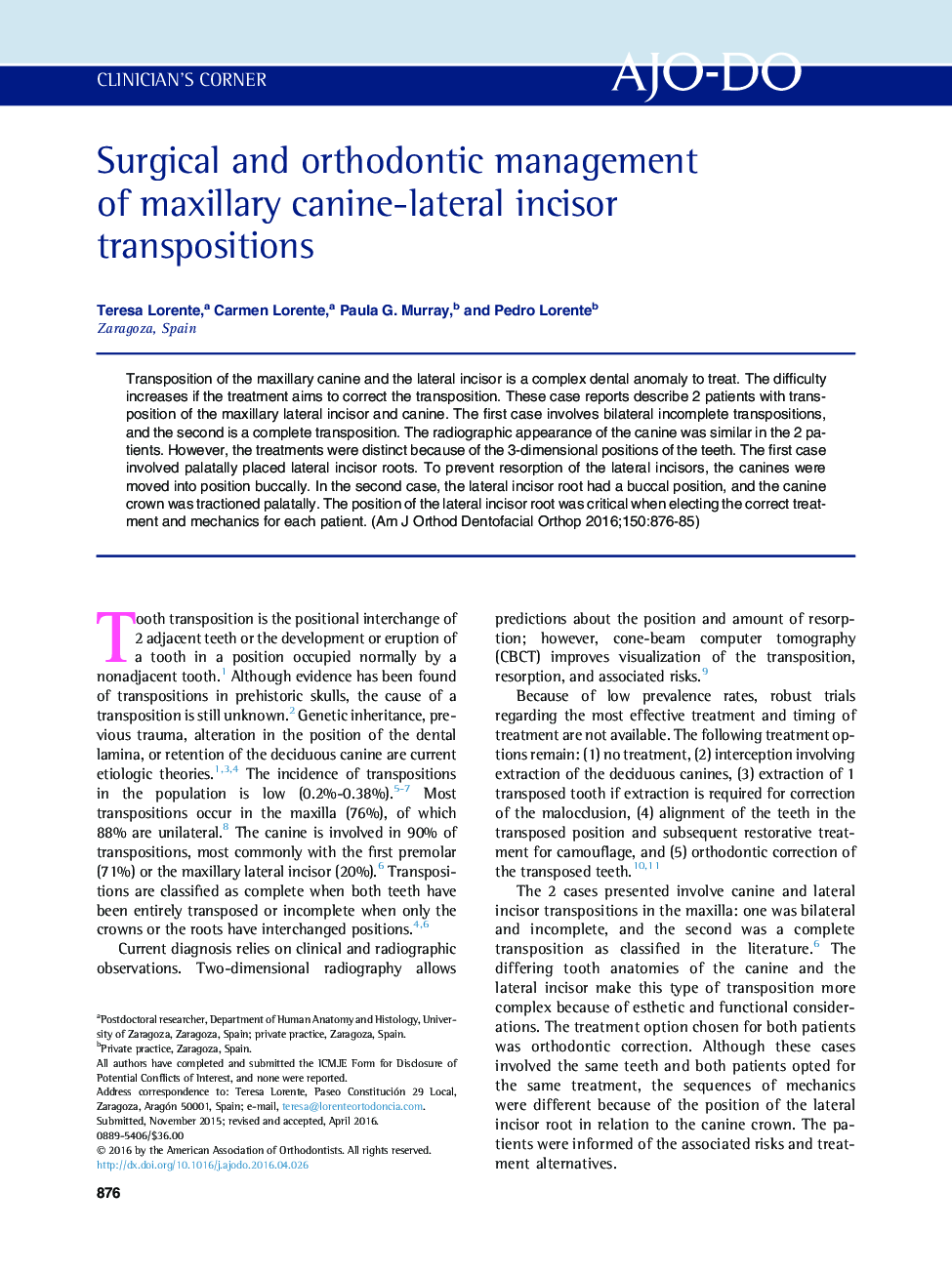| Article ID | Journal | Published Year | Pages | File Type |
|---|---|---|---|---|
| 5637768 | American Journal of Orthodontics and Dentofacial Orthopedics | 2016 | 10 Pages |
â¢This report compares 2 patients with lateral incisor-canine transpositions.â¢The incisor root was positioned palatally in 1 patient and buccally in the other.â¢Both patients needed surgical exposure.â¢The canine was tractioned buccally in 1 patient and palatally in the other.â¢Full correction was achieved in both patients.
Transposition of the maxillary canine and the lateral incisor is a complex dental anomaly to treat. The difficulty increases if the treatment aims to correct the transposition. These case reports describe 2 patients with transposition of the maxillary lateral incisor and canine. The first case involves bilateral incomplete transpositions, and the second is a complete transposition. The radiographic appearance of the canine was similar in the 2 patients. However, the treatments were distinct because of the 3-dimensional positions of the teeth. The first case involved palatally placed lateral incisor roots. To prevent resorption of the lateral incisors, the canines were moved into position buccally. In the second case, the lateral incisor root had a buccal position, and the canine crown was tractioned palatally. The position of the lateral incisor root was critical when electing the correct treatment and mechanics for each patient.
